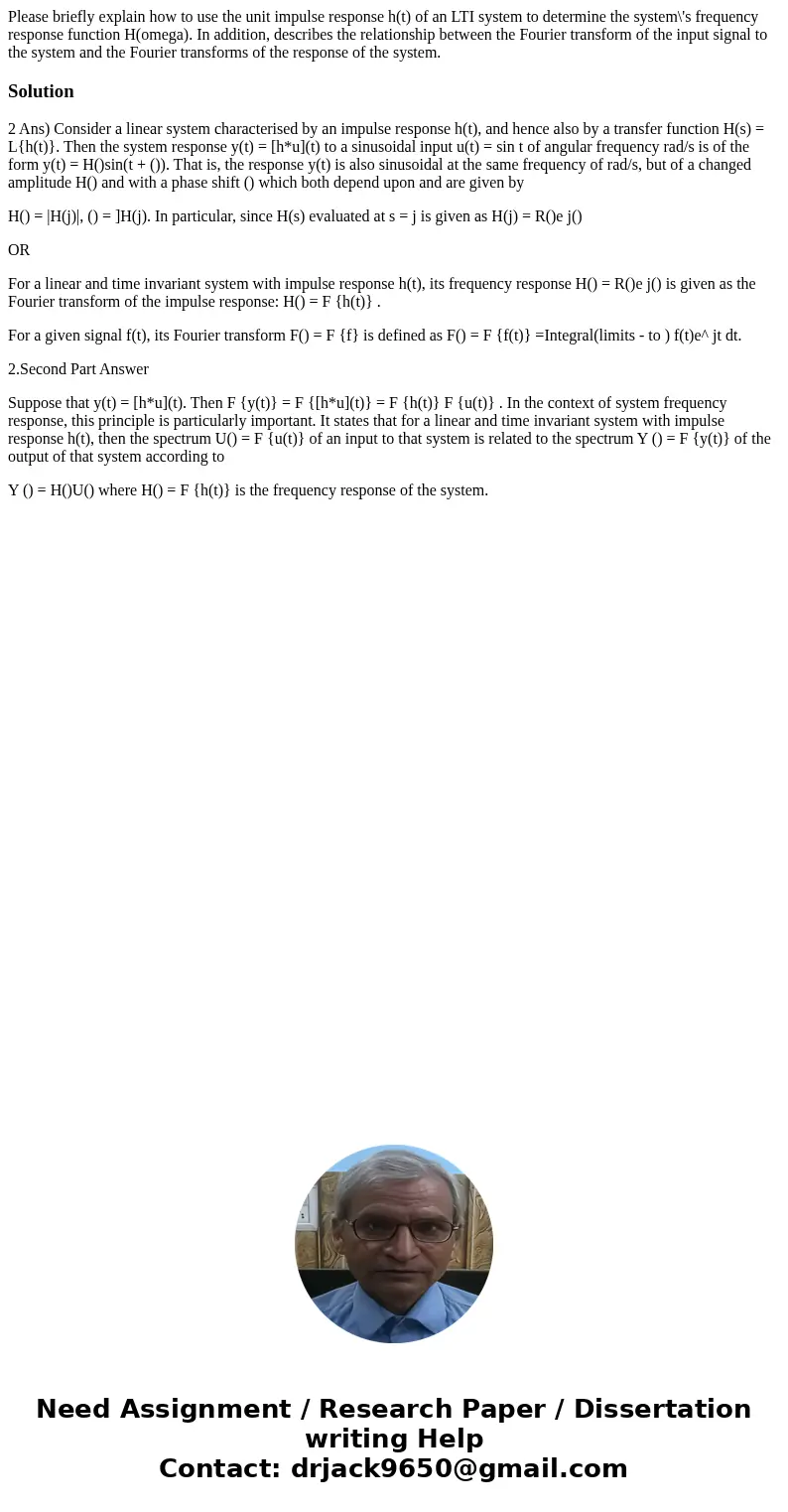Please briefly explain how to use the unit impulse response
Solution
2 Ans) Consider a linear system characterised by an impulse response h(t), and hence also by a transfer function H(s) = L{h(t)}. Then the system response y(t) = [h*u](t) to a sinusoidal input u(t) = sin t of angular frequency rad/s is of the form y(t) = H()sin(t + ()). That is, the response y(t) is also sinusoidal at the same frequency of rad/s, but of a changed amplitude H() and with a phase shift () which both depend upon and are given by
H() = |H(j)|, () = ]H(j). In particular, since H(s) evaluated at s = j is given as H(j) = R()e j()
OR
For a linear and time invariant system with impulse response h(t), its frequency response H() = R()e j() is given as the Fourier transform of the impulse response: H() = F {h(t)} .
For a given signal f(t), its Fourier transform F() = F {f} is defined as F() = F {f(t)} =Integral(limits - to ) f(t)e^ jt dt.
2.Second Part Answer
Suppose that y(t) = [h*u](t). Then F {y(t)} = F {[h*u](t)} = F {h(t)} F {u(t)} . In the context of system frequency response, this principle is particularly important. It states that for a linear and time invariant system with impulse response h(t), then the spectrum U() = F {u(t)} of an input to that system is related to the spectrum Y () = F {y(t)} of the output of that system according to
Y () = H()U() where H() = F {h(t)} is the frequency response of the system.

 Homework Sourse
Homework Sourse